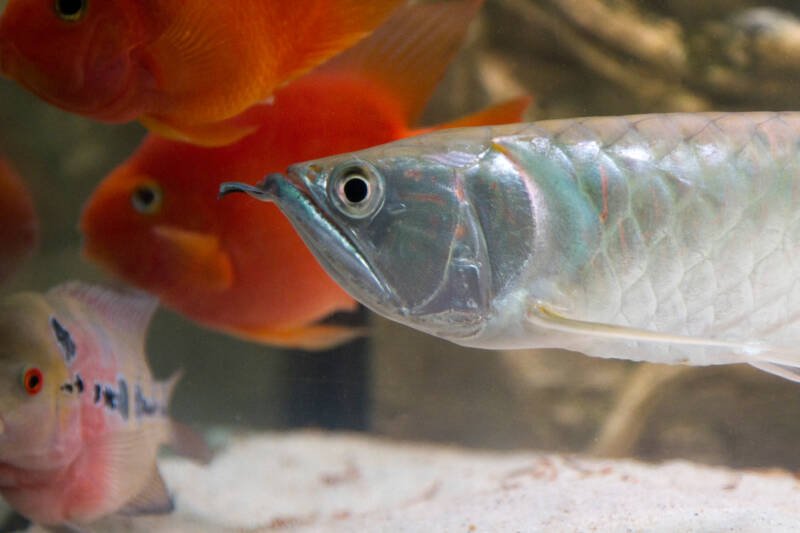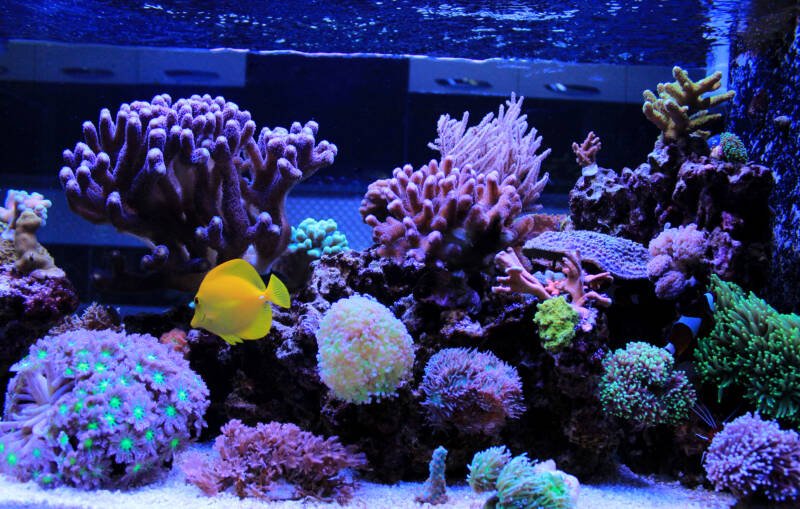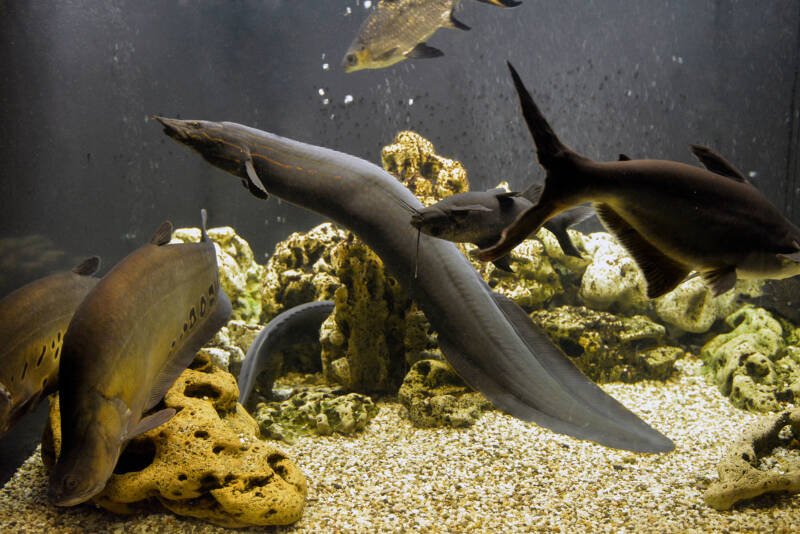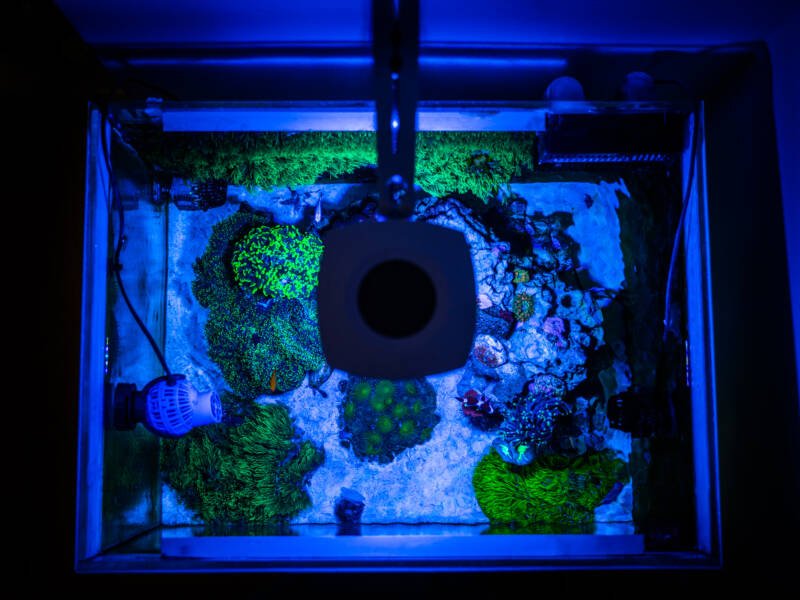Power outages are always an inconvenience, especially if you’ve got an aquarium.
While an aquarium can look quite natural, your fish and invertebrates rely on life support equipment that runs on electricity.

For some aquarists, a few hours without power is a mild concern. For others, like reef aquarists, a power outage can be devastating.
A long-term power failure can cause serious stress and loss in any aquarium.
In this article
Common Сauses of Power Outages
Animals
Wildlife, like mice and birds, can crawl into electrical power equipment along the transmission route or in your home. Animals often chew through wires or accidentally trigger a shutdown of electricity.
Trees
Wind, ice, and storms can snap branches, causing them to fall on transmission lines. Even in good weather, a rotten limb can suddenly collapse on a power line.
Lightning
Lighting strikes on the power grid are a common reason for power outages.
Automated “breakers” respond to the power surge caused by lightning, resulting in a brief power outage. Severe damage can cause longer power failures.
Equipment Failure
Not even the power company is immune from faulty equipment. If something breaks, the power has to be cut off while repairs are made.
Scheduled Maintenance
While this is not an emergency, scheduled shut-downs for normal repairs are not uncommon. You can be without power for eight hours or longer.
Vehicle Accidents
If a car or truck hits a light pole by accident or during construction activities, it will shut down the power to your home.
What Happens to an Aquarium When the Power Goes Out?
The threat created by a power failure depends on several factors. We’ll take a look at each one:
- Stocking level in the aquarium
- Temperature in the room
- Type of aquarium-freshwater community, reef, and planted
- Length of power outage.
A heavily stocked aquarium or a tank with large fish has a greater oxygen demand than a sparsely stocked aquarium.

Without surface agitation created by a filter or air diffuser, the tank has to rely on the natural diffusion of oxygen into the aquarium water.
Unfortunately, the oxygen demand is usually greater than what enters the water from the atmosphere.
There are many types of aquatic life that use oxygen. Fish, shrimp, snails, corals, along with billions of invisible microbes, all use oxygen.
Chemical reactions, like the breakdown of organic matter, also use up oxygen.
The warmer the water, the less oxygen it can hold. A power failure during the warm summer months makes it very hard for the water to hold enough oxygen without agitation.
Reef aquariums are especially sensitive to overheating.

Many reef tanks use chiller units to keep the water temperature stable. If the room rapidly cools without heating, your tank’s water temperature could drop to stressful levels.
LPS or SPS Corals need constant water movement along with specialized lighting during the daytime period. Without these critical factors, corals rapidly decline.
A planted aquarium with a low fish load is probably the most resistant to power-related stresses. If there is enough ambient sunlight, the plants will provide oxygen during the day, at least for a while.
Essential Equipment Must Have Power
Life-support equipment varies based on the type of aquarium. Lighting is essential for a reef tank but not for an aquarium full of plastic plants.
If you lose power when the temperature is close to what your aquarium requires, a heater is optional.
If your reef tank overheats due to lighting, you’ll need to power the chiller.
Circulation pumps are a must when keeping corals. All aquariums benefit from water circulation created by a filter. It is more important to agitate the water surface for aeration than it is to filter the water.
Preparing for a Power Outage

The simplest device to have on hand is a battery-powered air pump.
When the power goes out, simply turn on the battery-powered air pump and drop the air stone into the tank.
It won’t heat or cool the tank or power any equipment, but it will oxygenate your aquarium.
The PennPlax Silent Air B-11 back-up air pump automatically switches on battery power when it detects a power outage. It helps to keep extra batteries on hand in case the power is out for more than a few days.
This battery backup is designed specifically to run direct current (DC) flow pumps.
DC pumps rated for 12-24 volts are compatible with this unit. DC water pumps draw very little power compared to traditional pumps.
They create water flow throughout the aquarium and agitate the surface for aeration. They’re used mostly in reef aquariums, but you can use DC pumps in freshwater tanks too.
The IceCap V3 will power one pump for up to 35 hours. As you add additional water pumps, the run time decreases.
You cannot run traditional aquarium filters, heaters, or lights with the IceCap V3.
The Vortech battery backup is designed to provide emergency power to the Ecotech Vortech series 12-volt flow pumps.
The unit plugs into the wall, keeping the 12-volt battery charged. When the power goes out, the backup turns on to keep up to four pumps running.
This is an emergency backup designed to provide long-term protection. The unit automatically reduces the pump speed to conserve battery power.
It provides around 30 hours of power using a single Ecotech water pump.
The Tunze Turbelle Safety Connector is designed to provide battery backup power for Tunze Turbelle powerheads.
The adapter plugs into the powerhead. You provide a 12-volt battery. The connector has a 4 Amp fuse for safety.
In case of a power failure, the backup automatically switches over to the battery. This unit is designed to work only with Tunze powerheads.
If you’re not using DC pumps, the AVR 1000 backup battery is recommended. It will run a single 5-watt powerhead for about 15 hours.
The unit has multiple outlets but adding more devices, like a filter or heater, will drastically reduce the backup time to only a few hours.
What about a Generator?

If you’ve got a lot invested in a reef aquarium full of corals, the only way to run lights, pumps, and other gear is with generator.
Marine aquarists that live in areas with frequent power outages often have a small generator ready in case of electrical failure.
If you have a freshwater tank and want to fully protect your fish, a generator will let you run a filter, lights, heater, and other equipment for days on end.
The WEN 56203i Super Quiet 2000-Watt Portable Generator is ideal for running nano and medium-sized freshwater and reef aquariums.
The generator is small, lightweight, and has enough power to run the aquarium equipment.
The generator will run for about 10 hours on a tank of gasoline. If you’ve got a chiller or lots of lighting, a larger generator will be required.
Choosing the Right Battery Backup
When it comes to efficiently running a DC flow pump, the Vortech battery backup with an Ecotech pump is the winner.
The Vortech is designed specifically for long run times with the Ecotech pumps. The performance can’t be beaten by other backup systems.
Computer back-ups are designed to run monitors and computers for a very short time.
They’re intended to prevent a computer crash if the power is suddenly lost. The idea is to give you time to shut down the system before the battery dies.
If you want to run a small powerhead or filter, the AVR 1000 is recommended. It is a mid-sized consumer battery backup that won’t take up a lot of space.
It also has enough battery reserve to run a traditional powerhead for about 15 hours. The more devices you plug into the backup, the less time they’ll be able to run.
Final Thoughts
As you can see, the only way to provide heating, cooling, and lighting during an emergency is with a generator.
Reef aquarists using DC pumps have the advantage of low power consumption, allowing a longer run time.
The good news is aquariums hold a stable temperature for a relatively long time. This makes the need to run chillers, heaters, and lights only if you experience frequent or long-term power failures.
Our best advice is to consider how often and how long you expect to experience power problems. If they are frequent and during warm or cold weather, a generator may be the way to go.
If you have questions or comments, leave them below.



